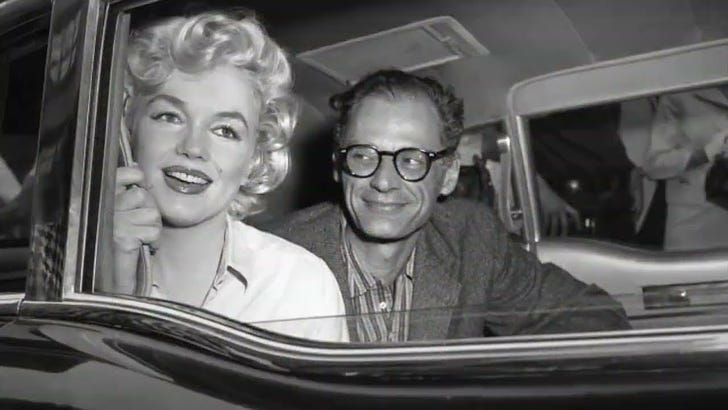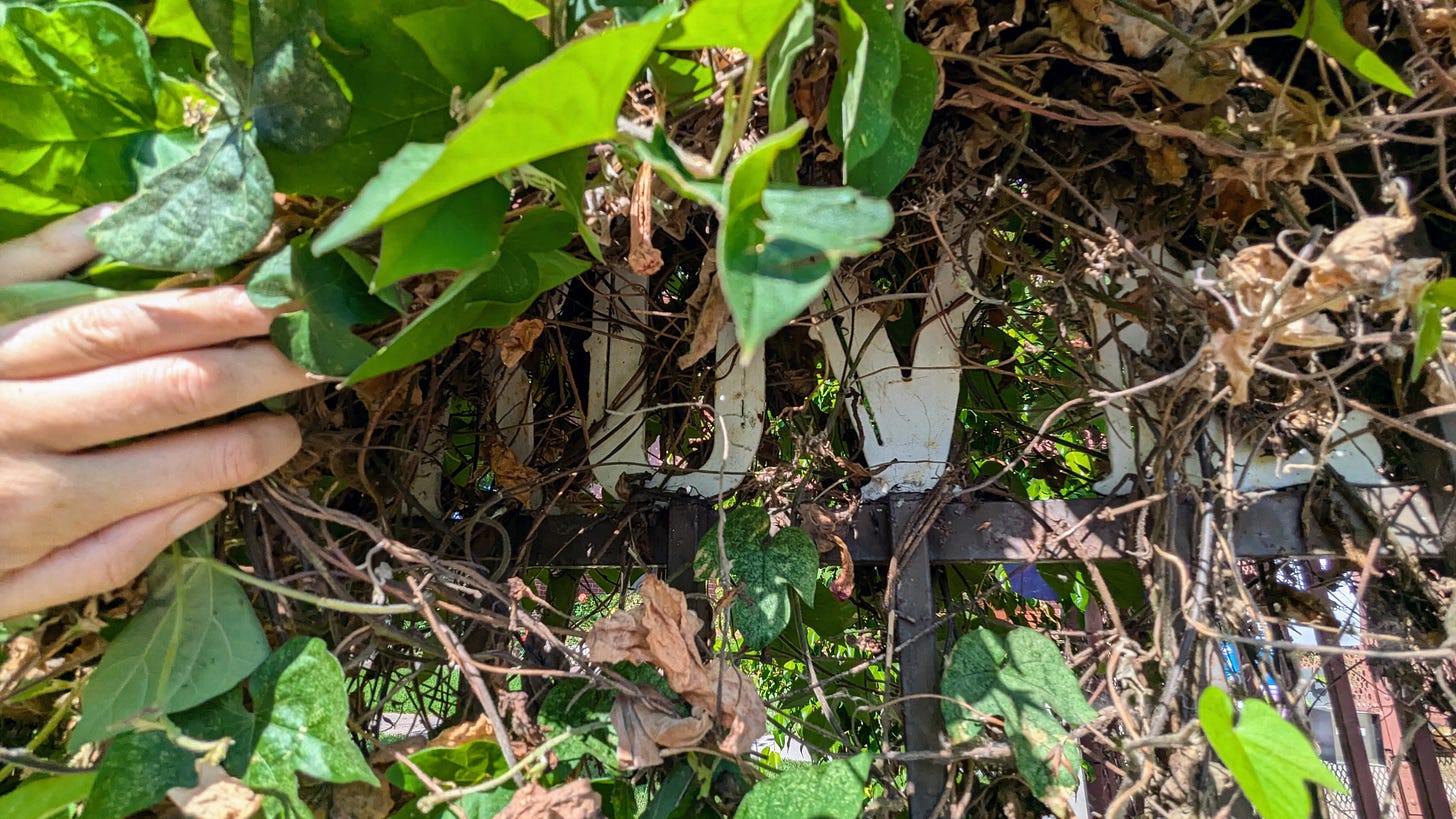From Holly Grove to Fifth Helena: Marilyn Monroe
62 years ago today, the world woke to the death of an icon.
The elegant 1929 bungalow at 12305 Fifth Helena—the only home Marilyn Monroe ever owned and where she died—has been making headlines since last year, when it was reprieved, last minute, from demolition. Los Angeles City Council belatedly came to their senses and declared it a Cultural Monument, blocking the bulldozers—for now.
The furore proved two things. First, Marilyn Monroe, decades after her convoluted movie career crashed to a halt, remains one of the biggest stars of all time. People still love and cherish her and she still has the power to trigger a media frenzy. Second, the current property owners have zero understanding of either Marilyn’s continued resonance for countless fans or their responsibilities as custodians of her journey’s end.
Marilyn’s enduring appeal is not hard to understand. Hollywood—the dream, the industry, the place—lifts its gaze to a divine pantheon, an array of movie stars, musicians, moguls and murderees who clawed their way out of mundanity and now exist on an exalted plane. Or at least a version of them does. The central throne in the pantheon is occupied by an incandescent idol, gleaming pure white. Marilyn Monroe, the ultimate confection, was created in part by an ambitious teenage model, Norma Jeane, and in part by all the men who passed her from hand to hand: Joe DiMaggio, Arthur Miller, Lee Strasberg, Allan Snyder, Milton Greene, Darryl F. Zanuck, Billy Wilder, George Cukor, Laurence Olivier, Yves Montand, Frank Sinatra, and the Kennedy brothers.
Screen Marilyn is a creature of bright blonde light, a maximum wattage woman constructed of sparkling circles and curves, but her origin lies in deep black shadows. Real Marilyn was born in heartache and fought a lifelong battle for survival. Her own mother tried to smother her, believing her child had no place in this world. The child lived, traumatized. She would spend her lifetime searching for a simulacrum of maternal affection, a place where she felt safe, in control, able to just be herself and still be loved.
Like many others before and since, she found respite in stepping outside her own existence. In the last interview before her death, she recalled the desire to be an actress taking root when she was around five years old.
“I didn't like the world around me because it was kind of grim but I loved to play house. It was like you could make your own boundaries. It goes beyond house; you could make your own situations and you could pretend…When I heard that this was acting, I said that's what I want to be”.
Marilyn’s Hollywood dream coalesced during her time at Holly Grove, the orphanage on El Centro where she lived from 1935-1937. The Los Angeles Orphans Home (founded in 1888) moved to this site after the land, a whole city block, was donated in 1910. At the time, it was considered a model institution, a kind place. But, by the time she arrived, young Norma Jeane had already been brutalized. Gladys, her mentally mother, struggled to care for her, placing her in a series of foster homes where she experienced abuse. When Gladys’ paranoid schizophrenia caused her to be institutionalized, her nine year old daughter ended up at Holly Grove, a not-orphan who was nonetheless abandoned and alone.

It was natural to dream of a better life. Young Norma Jeane could see the RKO water tower from her bedroom window. The studio was just a block away, albeit behind a high wall, but it was indubitably a place where magic was made, the magic that offered brief, vital escape from her everyday miseries.
“Some of my foster families used to send me to the movies to get me out of the house and there I'd sit all day and way into the night. Up in front, there with the screen so big, a little kid all alone, and I loved it."
The not-orphan constructed her dream of an exalted existence behind the studio walls, as a star. She knew a little about the movie industry, as her mother was a film-cutter and her friends and lodgers were craftspeople. They didn’t make much money, but they worked on the lot alongside people who did. In the Depression-hit early 1930s, the contrast between lowly craft employees and above-the-line talent bit deep. Norma Jeane grew up surrounded by stories of ordinary people who, through extraordinary good fortune, were lifted out of poverty and lovelessness. Could she be next?
After Holly Grove, Norma Jeane moved in with her mother’s friend, Grace McKee, another film editor. Grace believed the little girl’s face might be her only chance at fortune, and encouraged her to think of a movie biz career. Between Grace and Holly Grove and all the foster homes, Norma Jeane became obsessed with a very specific Hollywood dream. She believed that if, and only if, she became a full blown movie star, she could finally achieve actualization. Transformation. Transcendence. Happiness.
Home, even.
It’s still possible to visit Holly Grove and see where Marilyn wove her dream, albeit built over and overgrown. Although the group home closed in 2005, it’s still a place that cares for children from difficult family situations. The original Holly Grove sign is hidden beneath layers of bindweed, but the name remains. The main frontage was altered in the 1950s, but the bones of the old orphanage still peek through. You can still see the water tower (now emblazoned with the Paramount logo). You can still stand and gaze up at the high studio wall and wonder what dramas are unfolding on the other side. You can see how living here might propel an idealistic little girl on a trajectory over which she had little control.
The relationship between Monroe and the only home she ever owned is a little more complex. Marilyn Monroe’s movie career could be described as a search for home in all the wrong places. Twentieth Century Fox signed her up purely so she wouldn’t go to RKO–and fulfill her childhood fantasy. Once they had her under contract she discovered the vast gulf between ‘playing house’ for your own entertainment and for hostile studio execs. She’d spend the next twelve years fighting battles on every front: her career, her marriages, her health. She played house with Joe DiMaggio and Arthur Miller, but couldn’t make wifedom stick: marital strife indoors, paparazzi outside every window.
In early 1962, it seemed like Marilyn Monroe, the star persona, had entered supernova. Her relationship with Twentieth Century Fox, which had always been volatile, soured completely and she was fired from the movie she never wanted to make in the first place, Something’s Gotta Give. She felt that her goal of being taken seriously as an actor was now forever out of reach. Her marriage to Arthur Miller had fallen apart, leaving her vulnerable to the predation of other, less principled men. She leant back into the dumb blonde image she had tried to discard with the ‘Happy Birthday Mr. President’ shenanigans. In tarot terms, she was having a Tower moment, a five-alarm crisis, the life she’d constructed tumbling down around her.
Yet, in destruction lie the seeds of liberation. Monroe was deep in treatment with psychoanalyst Ralph Greenson. After their sessions, he invited her to dinner in his family home, hoping to model simple happiness for his troubled patient. She seemed to be making progress and signaled this by making one very important change to her lifestyle. The drifter who had moved from foster home to orphanage, hotel to rented apartment, bought a Spanish-style bungalow, similar to Greenson’s. She traveled to Mexico to buy furnishings. She was nesting, rethinking, finally in a place where she could heal and reinvent her fractured self. After all the trauma, she was finally playing house to please no one but herself.
Until the evening of August 4, 1962, when it all fell apart. The home that could have been her salvation became her tomb.
James Ellroy draws a straight line from Holly Grove to Fifth Helena in his 2023 novel, The Enchanters. Investigator/fixer/on-again off-again cop Freddie Otash (from Widespread Panic) is tasked first with surveilling Monroe in her Brentwood pad and then with tidying up some of the many ragged ends that fluttered after her apparent death by accidental overdose. Otash uncovers long-lasting friendships between Monroe and fellow Holly Grove residents, and the plot hinges on the hustles they continued together long after they stepped outside the orphanage’s gates. Ellroy suggests the same fear drives movie stars and street kids alike: you can’t stop hustling until you can call four walls your own.
Monroe spent her life running from her fears of abandonment, or having to live in a place poisoned with abuse. She bought the pink house on Fifth Helena too late for it to save her from her past. Nonetheless, it still stands as a symbol of her struggle, her hope, the magical smile she plastered over her pain and disappointment. People loved, and still love, Marilyn Monroe because of the light inherent in her smile. They do not want to forget the place where the light was extinguished.
Shockingly, the battle of Fifth Helena is not yet won. Despite the City Council’s order of protection, the owners have filled in the kidney shaped pool and grassed it over. There are more court cases in the offing as they continue to insist on their right to demolition. Watch this space, and my friends over at Esotouric, for ways you can help when the time comes.







Thank you for your compassionate remembrance of the Hollywood kid who fought so hard.
Phenomenal work as always, my friend! What a great read.